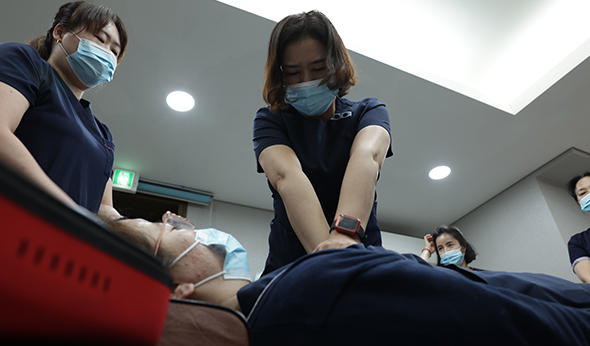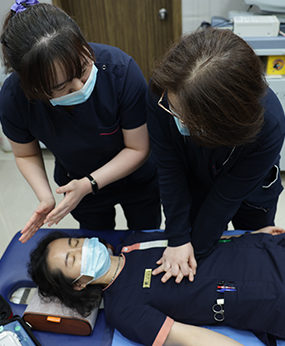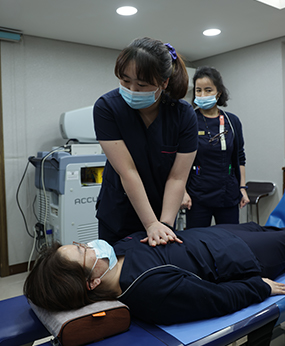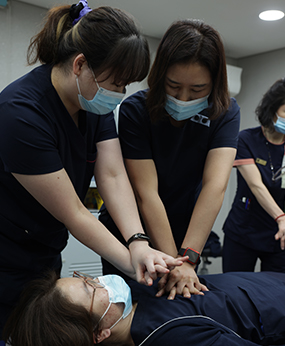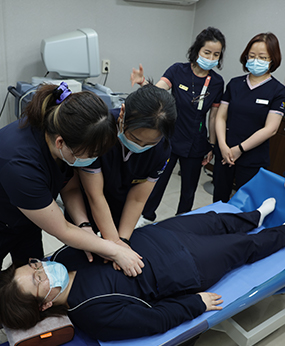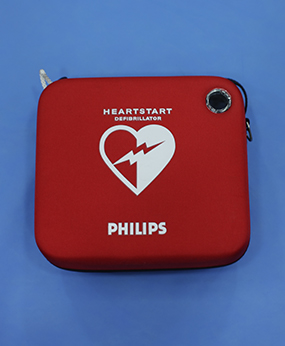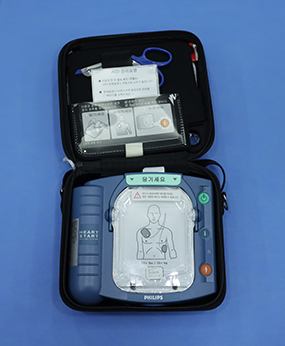KOREAVEIN
Central Varicose Vein Clinic
All surgeries are performed safely using semi-sedation and local anesthesia.
-
know-how 01
Semi-sedation anesthesia to reduce the risk of deep vein thrombosis after surgery
At Central Varicose Vein Clinic, all varicose vein surgeries are performed under semi-sedation anesthesia. Through this surgical know-how, the incidence of deep vein thrombosis side effects is reduced by allowing patients to walk immediately after surgery. It has been possible to reduce it significantly.
Among 5,177 surgical cases at Central Varicose Vein Clinic from 2007 to present (as of the end of April 2025), The reason why there was not a single case of deep vein thrombosis is because of this surgical know-how.
-
know-how 02
Hospital contributing to the development of treatment technology
Central Thoracic Surgery contributed to the development of varicose vein treatment by being the first in Korea to present at an academic conference on the concentration of sclerotherapy solution (0.1%) in relation to vascular sclerotherapy, which has now become one of the main treatments for varicose veins.
-
know-how 03
We only care about the health of our patients’ legs
In 2016, when patients' rights and interests were violated because varicose veins were excluded from actual cost insurance compensation, he served as chairman of the pan-medical community actual cost insurance countermeasures committee, informed the Financial Supervisory Commission of the unfairness of the provisions , and led to a revision of the standard terms and conditions. This is because we had a philosophy to protect the rights and interests of patients who silently work on the front lines of life .
know-how 04
Swelling anesthesia technique to block thermal damage
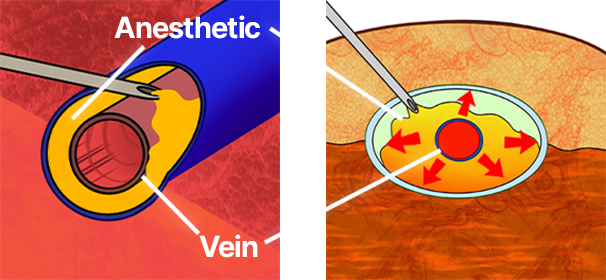
It is known that endovenous laser surgery carries a risk of nerve damage due to heat.
To solve this problem, our Central Thoracic Surgery Clinic uses a swelling anesthesia technique that injects anesthetic around the problem blood vessel and pushes the nerves around the blood vessel out, thereby preventing the risk of nerve damage. The solution used for swelling anesthesia contains tumescent anesthetic, which not only reduces pain but also neutralizes/absorbs active oxygen, histamine inflammatory substances, and combustible harmful substances that may be generated during the surgery, thereby preventing damage to the tissues and nerves around the surgical blood vessel in advance.
In addition, since the swelling anesthetic solution is directly injected around the blood vessel through a round-tipped cannula instead of a syringe needle, there is no risk of damage to the skin or blood vessel tissue caused by the syringe needle.
Unlike general intravenous laser surgery, which only performs surgery above the knee due to the risk of nerve damage by applying a swelling anesthesia technique, Central Thoracic Surgery's varicose vein surgery can occlude even problematic blood vessels below the knee, and patients can use a combination of various surgical methods. We are preventing the need for complex surgeries that can place a burden on patients. Central Thoracic Surgery provides safe surgery to patients based on clinical data and experience accumulated from 5,177 cases of surgery over 18 years (as of the end of April 2025). there is.
Central Thoracic Surgery performs surgery under semi-sedation anesthesia.
Most medical institutions that treat varicose veins use sedative anesthesia during surgery.
There are also general hospitals that still use general anesthesia for surgery.

- To eliminate this risk, we at Central Thoracic Surgery have been performing semi-sedative anesthesia for varicose vein surgery for a long time so that patients remain conscious rather than unconscious .
- To achieve this, medical staff perform surgery from 50cm away from the patient while monitoring the patient's vitals every 30 seconds to 1 minute.
- Propofol, used for semi-sedative anesthesia, is completely decomposed within 1 to 2 minutes due to the body's metabolism making it a very safe anesthetic when monitored by medical staff right next to it.
- Central Thoracic Surgery's semi-sedation anesthesia is a very safe anesthesia technique that has been used in over 5,000 surgeries over 18 years.Receive surgery safely at Central Thoracic Surgery, which has the expertise and experience to treat varicose veins
Central Thoracic Surgery places safety first.
-

Follow-up care without worry of recurrence
Central Thoracic Surgery provides free reoperation if the operated blood vessels recur after treatment of varicose veins.
Central Thoracic Surgery's after-care system provides continuous care even after treatment to ensure the health of patients' legs
-
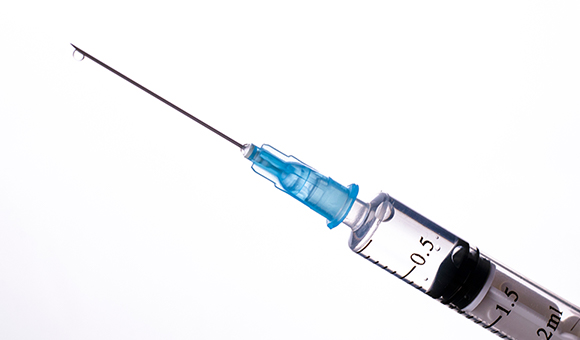
We protect safety from the smallest places
Fine glass powder generated when cutting a glass ampoule will inevitably enter the patient's body.To prevent this problem,
Central Thoracic Surgery uses filter needles, which are not commonly used in general medical institutions due to cost issues, to protect the safety of patients from the smallest point
A thorough safety management system
in preparation for emergency situations
Central Thoracic Surgery is equipped with emergency equipment and
a cardioverter-defibrillator that can respond in the event of an emergency.
In addition, all employees conduct CPR mock training once a week to respond quickly even in urgent emergency situations.
Central Thoracic Surgery’s varicose vein treatment is based on no incisions and minimal pain
| Laser surgery | High frequency surgery | Benasil | Clarivane | Traditional Surgery | Vascular Sclerotherapy | |
| Treatment | 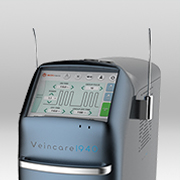 |
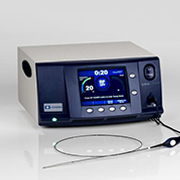 |
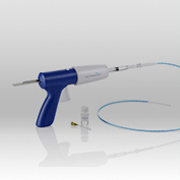 |
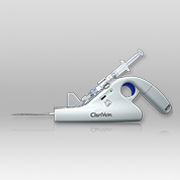 |
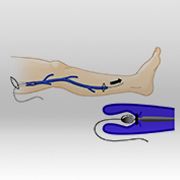 |
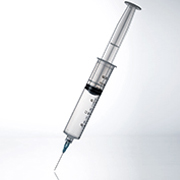 |
| The principle of treatment | Insert a laser beam slightly thicker than the hair into the problematic blood vessel and generate heat to close the blood vessel. | Insert a high frequency catheter into the problematic blood vessel and generate heat to close the blood vessel. (Same principle as laser surgery) |
A bioadhesive substance called cyanoacrylate is injected into the problematic blood vessel to close the blood vessel. | Use rotating catheters to cause physical stimulation to the problematic blood vessels and at the same time inject STS solution to close the blood vessels. | Insert the wire into the problematic blood vessel, tie the blood vessel, take it out of the body and remove it. | Vascular obstruction through vascular fibrosis by injecting curing agent into the problematic blood vessel. |
| Recovery | Daily life available on the day of surgery for 1 week after surgery Wearing compression stockings |
Daily life available on the day of surgery for 1 week after surgery Wearing compression stockings |
No compression stockings for daily life on the day of surgery | Daily life possible on the day of surgery Wearing compression stockings for about 48 hours after surgery |
Daily life available a few days after surgery Wearing compression stockings for more than 1 week after surgery |
Daily life possible on the day of surgery |
| Postoperative progress | A slight bruise Mild pain |
A slight bruise Mild pain |
An allergic reaction A temporary itch |
An allergic reaction | A severe bruise Pain |
An allergic reaction A light bruise, A temporary change in skin color |
| Limitations | Possibility of heat damage to surrounding tissues if unskilled | A relatively high cost of treatment compared to lasers | Relatively short duration and expensive treatment costs | An allergic reaction | The actual incision leaves scars and recovery time is delayed (in advanced countries, it has already been excluded from the priority treatment method) |
Mildly symptomatic applicable only in case |
At Central Varicose Vein Clinic
The American Vein and Lymphology Association does not recommend extraction surgery (orthodox surgery) for varicose vein surgery. In accordance with the guidelines, surgical methods other than extraction surgery (orthodox surgery) are being performed.Depending on the diagnosis results, we apply the most appropriate surgical method to the patient..
‘Practice Guidelines for Superficial Venous Disease’ 3p 中
https://www.myavls.org/member-resources/clinical-guidelines.html
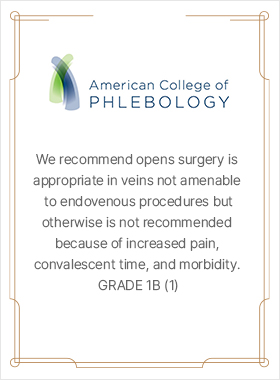
Telephone consultation & phone reservation
+82-10-6551-1597
82-2-566-7189


